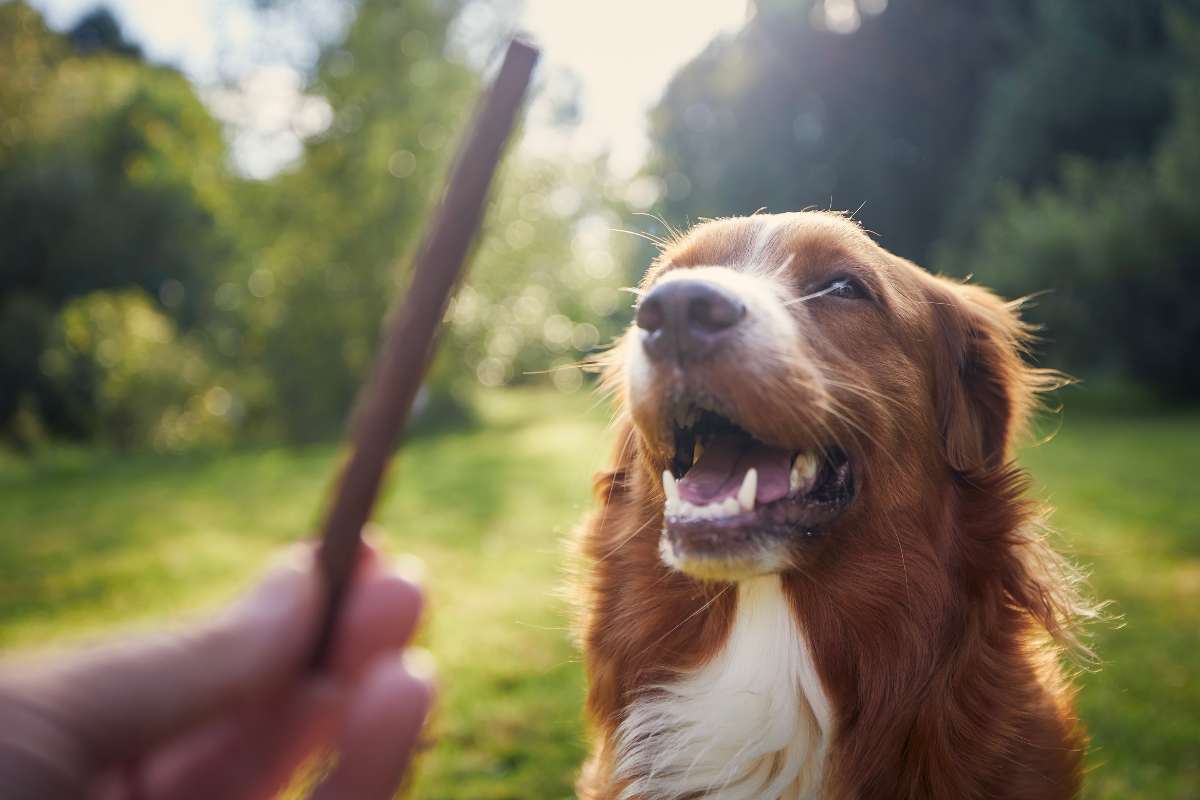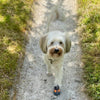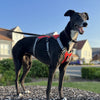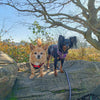Should I Give My Dog Treats On Walks

Dog walks are not just a routine for your furry friend; they're a time for bonding, training, and shared moments of joy. One effective tool to enhance this experience is the strategic use of treats. However, knowing when and how to use treats during dog walks is key to building positive behaviours and fostering a strong connection between you and your canine companion. In this comprehensive guide, we'll explore the art of treating during dog walks, covering when to reward, how to do it effectively, and the benefits of this positive reinforcement approach.
Understanding the Power of Treats
Treats serve as a powerful motivator and reward during dog walks, reinforcing good behaviour and encouraging positive associations. The key lies in using treats judiciously and effectively to communicate with your dog. Here are scenarios when treats can be particularly beneficial.
Basic Obedience Training
The foundation of any successful dog walk is built on basic obedience. Treats are invaluable when teaching commands like sit, stay, or come. Reinforce these behaviors with treats to create a positive connection between the command and the reward, making future walks more enjoyable and manageable.
Positive Reinforcement for Good Behaviour
Reinforce positive behaviors such as loose leash walking, ignoring distractions, or calmly greeting other dogs or people. Whenever your dog exhibits behaviour you want to encourage, promptly reward them with a treat. This positive reinforcement strengthens the likelihood of the behaviour being repeated.
Introducing New Environments
If you're taking your dog to a new or potentially challenging environment, treats can be used to create positive associations. For instance, reward your dog when they remain calm in a busy park or when they encounter new sounds and sights. This helps build confidence and reduces anxiety during walks.
Recall Training
Recall, or coming when called, is a crucial skill for off-lead walks or in potentially unsafe situations. Use treats to reward your dog each time they respond promptly to your recall command. This creates a strong bond between the command and the positive experience of receiving a treat.
Managing Distractions
Dogs are naturally curious, and distractions abound during walks. Treats can be used to redirect your dog's attention from a potential distraction, such as a passing squirrel or another dog. Offering a treat for refocusing on you reinforces that paying attention to you is rewarding. Use the "watch" command here and get your dog to look at you.
Encouraging Calm Behavior
If your dog tends to get overly excited or anxious during walks, treats can help encourage calm behaviour. Reward moments of calmness, such as sitting quietly at a crossroads or remaining composed in the presence of other dogs. Over time, this helps your dog associate calm behavior with positive outcomes.
Building Trust and Bonding
Treats are a powerful tool for building trust and strengthening the bond between you and your dog. By associating treats with positive experiences during walks, you create an environment of trust, making your dog more receptive to your guidance and commands.
Medical or Grooming Positive Associations
If your dog has a negative association with specific medical or grooming activities, such as nail trimming or ear cleaning, treats can help change their perception. Offer treats before, during, and after such activities to create positive associations and reduce anxiety.
Tips for Effective Treat Use
Now that we've explored when to use treats, let's delve into how to use them effectively during dog walks
Use High-Value Treats
Choose treats that are particularly enticing for your dog. High-value treats can be chunks of meat, cheese, or specially designed dog treats. Reserve these for moments that require extra motivation or during challenging training situations.
Be Timely with Rewards
Timing is crucial when using treats for reinforcement. Offer the treat immediately after your dog exhibits the desired behavior. This creates a clear connection between the behaviour and the reward, helping your dog understand what they are being rewarded for.
Keep Treats Varied
To maintain your dog's interest, use a variety of treats during walks. This prevents your dog from getting bored with the same treat and keeps them motivated to earn their reward.
Watch Portion Sizes
Be mindful of the size of treats you use, especially if you're providing multiple rewards during a walk. Small, bite-sized treats are sufficient, ensuring your dog doesn't consume excessive calories during training.
Use Treats in Moderation
While treats are a fantastic tool, it's essential to use them in moderation. Over-reliance on treats can lead to obesity or diminish their effectiveness as a reward. Strike a balance by gradually reducing treat frequency as your dog becomes more adept at following commands.
Mix Treats with Praise
Alongside treats, incorporate verbal praise, petting, and positive body language to reinforce good behavior. The combination of treats and praise enhances the overall reinforcement experience for your dog.
The Benefits of Using Treats on Dog Walks
Understanding when and how to use treats during dog walks offers various benefits for both you and your furry companion.
Positive Association with Commands
Treats create positive associations with commands, making your dog more likely to respond promptly to your cues. This positive reinforcement strengthens the communication between you and your dog.
Enhanced Training Efficiency
Treats serve as powerful motivators, making the training process more efficient. Your dog is more likely to engage in learning and responding positively to commands when treats are involved.
Increased Bonding and Trust
The use of treats fosters trust and strengthens the bond between you and your dog. It creates a positive and rewarding environment, making your dog more receptive to your guidance and direction.
Reduced Stress and Anxiety
Treats can help reduce stress and anxiety, especially in challenging or unfamiliar situations. By associating treats with positive experiences, your dog becomes more comfortable and less anxious during walks.
Improved Recall and Off-Lead Behaviour
Recall training becomes more effective with the use of treats. Your dog associates coming when called with a rewarding experience, enhancing their reliability in off-lead situations.
Encouragement of Desirable Behaviors
They also serve as a powerful tool to encourage desirable behaviours such as calmness, loose lead walking, and ignoring distractions. This positive reinforcement promotes good behavior during walks.
Tailored Training for Individual Needs
The use of treats allows for tailored training based on your dog's individual needs. Whether addressing specific behavioral challenges or reinforcing basic commands, treats can be customised to suit your dog's preferences and motivation levels.
Using treats during dog walks is an art that, when mastered, can transform routine strolls into engaging and positive experiences for both you and your furry friend. By understanding when to use treats, how to use them effectively, and the benefits they bring to training, you're well-equipped to navigate the world of positive reinforcement.
Remember, each dog is unique, and finding the right balance of treats, praise, and other forms of reinforcement is a journey that strengthens your bond and enhances the joy of every walk. So, grab those treats, embark on your next adventure, and savour the moments of learning and connecting with your canine companion. Happy walking!
-
Posted in
dog treats, dog walking





